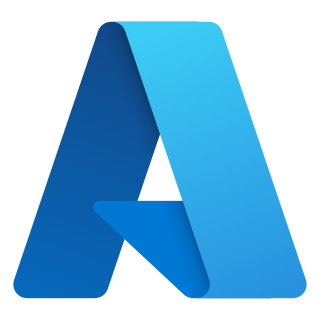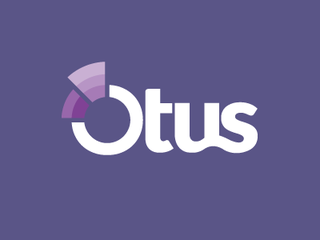Blended learning or hybrid learning, also known as technology-mediated instruction, web-enhanced instruction, or mixed-mode instruction, is an approach to education that combines online educational materials and opportunities for interaction online with physical place-based classroom methods.
The educational system in Taiwan is the responsibility of the Ministry of Education. The system produces pupils with some of the highest test scores in the world, especially in mathematics and science. Former president Ma Ying-jeou announced in January 2011 that the government would begin the phased implementation of a twelve-year compulsory education program by 2014.
A learning management system (LMS) or virtual learning environment (VLE) is a software application for the administration, documentation, tracking, reporting, automation, and delivery of educational courses, training programs, materials or learning and development programs. The learning management system concept emerged directly from e-Learning. Learning management systems make up the largest segment of the learning system market. The first introduction of the LMS was in the late 1990s. LMSs have been adopted by almost all higher education institutions in the English-speaking world. Learning management systems have faced a massive growth in usage due to the emphasis on remote learning during the COVID-19 pandemic.
Educational technology is the combined use of computer hardware, software, and educational theory and practice to facilitate learning. When referred to with its abbreviation, "EdTech", it often refers to the industry of companies that create educational technology. In EdTech Inc.: Selling, Automating and Globalizing Higher Education in the Digital Age, Tanner Mirrlees and Shahid Alvi (2019) argue "EdTech is no exception to industry ownership and market rules" and "define the EdTech industries as all the privately owned companies currently involved in the financing, production and distribution of commercial hardware, software, cultural goods, services and platforms for the educational market with the goal of turning a profit. Many of these companies are US-based and rapidly expanding into educational markets across North America, and increasingly growing all over the world."
A student information system (SIS), student management system, school administration software or student administration system is a management information system for education sector establishments used to manage student data. It integrates students, parents, teachers and the administration. Student information systems provide capabilities for registering students in courses; documenting grading, transcripts of academic achievement and co-curricular activities, and the results of student assessment scores; forming student schedules; tracking student attendance; generating reports and managing other student-related data needs in an educational institution.

SchoolTool is a GPL licensed, free student information system for schools around the world. The goals of the project are to create a student information system, including demographics, gradebook, attendance, calendaring and reporting for primary and secondary schools, as well as a framework for building customized applications and configurations for individual schools or states.
Azure DevOps Server, formerly known as Team Foundation Server (TFS) and Visual Studio Team System (VSTS), is a Microsoft product that provides version control, reporting, requirements management, project management, automated builds, testing and release management capabilities. It covers the entire application lifecycle and enables DevOps capabilities. Azure DevOps can be used as a back-end to numerous integrated development environments (IDEs) but is tailored for Microsoft Visual Studio and Eclipse on all platforms.
Microsoft Azure Dev Tools for Teaching or simply Azure Dev Tools for Teaching is a Microsoft program to provide students with Microsoft software design, Microsoft developer tools, Cloud Computing Access and learning resources. The program is available for university/college and K-12 students Azure for Student and Azure Dev Tools for teaching are available in more than 140 countries.

Microsoft Azure, or just Azure, is the cloud computing platform developed by Microsoft. It has management, access and development of applications and services to individuals, companies, and governments through its global infrastructure. It also provides capabilities that are usually not included within other cloud platforms, including software as a service (SaaS), platform as a service (PaaS), and infrastructure as a service (IaaS). Microsoft Azure supports many programming languages, tools, and frameworks, including Microsoft-specific and third-party software and systems.
Communities In Schools (CIS) of Chicago is a non-profit, 501(c)(3) organization that connects Chicago public school students with social, emotional, health and enrichment programs that remove barriers to learning. Founded in 1988, Communities In Schools of Chicago is partnering in 2019-20 with 175 Chicago Public Schools and 200+ service providers to facilitate program and service connections that address students' needs – all at no cost to students or schools. Many of these services are basic but essential, from health services to arts enrichment to violence prevention. Communities In Schools of Chicago is one of more than 130 local affiliates of the national Communities In Schools organization.

D2L is a Canada-based global software company with offices in Australia, Brazil, Europe, India, Singapore, and the United States.
Online communication between home and school is the use of digital telecommunication to convey information and ideas between teachers, students, parents, and school administrators. As the use of e-mail and the internet becomes even more widespread, these tools become more valuable and useful in education for the purposes of increasing learning for students, and facilitating conversations between students, parents, and schools.
Instructure Holdings, Inc. is an educational technology company based in Salt Lake City, Utah, United States. It is the developer and publisher of Canvas, a web-based learning management system (LMS), and Mastery Connect, an assessment management system.
WebWeaver is a commercial web-based Learning management system. This software has been developed and distributed by the German company DigiOnline GmbH including a variety of tools that allow and enhance communication and collaboration of those involved in education. Part of WebWeaver is a Content Management System (CMS), which is used for building and maintenance of websites.

Edsby is an educational technology company headquartered in Toronto, Canada. It is the developer and publisher of the Edsby platform, a web-based K-12 learning management system (LMS) and analytics platform, and Unison, an educational data aggregation product.

Google Classroom is a free blended learning platform developed by Google for educational institutions that aims to simplify creating, distributing, and grading assignments. The primary purpose of Google Classroom is to streamline the process of sharing files between teachers and students. As of 2021, approximately 150 million users use Google Classroom.
Live online tutoring is the process of tutoring in an online environment, with teacher and student interacting in real-time without necessarily being in the same place. This real-time element, whilst presenting a significant technical challenge, sets live online tutoring apart from traditional online tutoring as it attempts to mimic in-person interaction as closely as possible rather than simply facilitating knowledge transfer.

Otus is an educational technology company providing a learning management system, data warehouse and many classroom management tools for K-12 students, teachers, parents, and administrators. Otus was nominated as a finalist of two 2016 Codie awards in the "Best Classroom Management System" and "Best K-12 Course or Learning Management Solution" categories, one 2018 Codie award for "Best Student Assessment Solution", and two 2019 Codie awards for "Best Data Solution" and "Best Administrative Solution". Otus was a finalist in EdTech Digest's 2016 "District Data Solution" and "Learning Management System" categories. Otus co-founder Chris Hull was also announced as one of the National School Boards Association's "20 to Watch Educators for 2016".

Ed was a chatbot co-developed by the Los Angeles Unified School District and AllHere Education. Described as a learning acceleration platform, it was the first personal assistant for students in the United States. Part of the district's Individual Acceleration Plan, it was able to interact with students both verbally and visually, offering support in 100 languages. The chatbot was launched on March 20, 2024, as part of the district's plan for academic recovery from the COVID-19 pandemic and to improve overall academic performance. Utilizing artificial intelligence, Ed organizes data and reports on grades, test scores, and attendance, creating individualized plans for each student. After the company behind it, AllHere, collapsed, the district shuttered operations of the chatbot on June 14, 2024.
DotB is a Vietnamese technology company that provides management and digital transformation solutions for the education sector. Founded in 2018, the company is headquartered in Ho Chi Minh City. In 2023, DotB became one of the three founding members of the Vietnam Innovative Education Alliance, a network of education technology startup projects established by the High-Tech Business Incubator of Ho Chi Minh City.






















